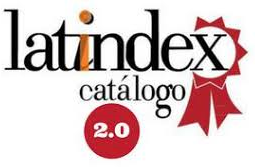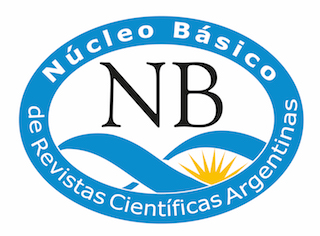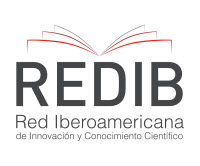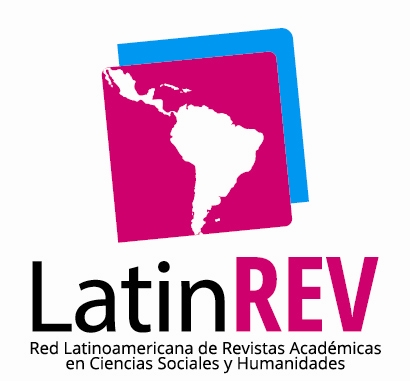De Serpentibus en el norte medieval: traducción y comentario a Om Ormar.
Resumen
El artículo presenta una primera traducción castellana del fragmento enciclopédico islandés conocido como Om Ormar. Este texto constituye una versión abreviada de los textos latinos sobre animales reptilianos que derivan de la sección De Serpentibus de las Etimologías isidorianas. Presentamos aquí además algunas reflexiones sobre su posible lugar en la cultura letrada medieval islandesa, así como de su posible filiación dentro de la cultura enciclopédica de la Edad Media Central, planteando la hipótesis de su cercanía con el pasaje correspondiente en el De Animalibus de Alberto Magno.
Citas
Ahronson, K. (2015), Into the Ocean: Vikings, Irish, and Environmental Change in Iceland and the North, Toronto: University of Toronto Press.
Aiken, P. (1947), “The Animal History of Albertus Magnus and Thomas of Cantimpré”, Speculum 22 (2), 202-225.
Astås, R. (2010), Et Bibelverk fra Middelalderen. Studier I Stjórn, 2da Ed., Tønsberg: Bib-Hive.no. Disponible en http://www-bib.hive.no/tekster/Astaas-2010-Et-bibelverk-fra-middelalderen.pdf
Asúa, M. (1994), “El De animalibus de Alberto Magno y la organización del discurso sobre los animales en el siglo XIII”, Patristica et Medievalia 15, 3-26.
Bandlien, B. (2016), “Situated Knowledge: Shaping Intellectual Identities in Iceland, c. 1180-1220”, en Georgieva Eriksen, S. (ed.) Intellectual Culture in Medieval Scandinavia, c. 1100–1350, Turnhout: Brepols, 137-174.
Barney, S. et al. (trads.) (2006), The Etymologies of Isidore of Seville, Cambridge: Cambridge University Press.
Barreiro, S. (2019), “The Hoard Makes the Dragon: Fáfnir as a Shapeshifter”, en Barreiro, S. y Cordo Russo, L. (eds.), Shapeshifters in Medieval North Atlantic Literature, Amsterdam: Amsterdam University Press, 53-81.
Benedictini collegii Vedastini (eds.) (1624), Vincentii Burgundi, ex ordine Praedicatorum venerabilis episcopi Bellovacensis, Speculum Quadruplex, Naturale, Doctrinale, Morale, Historiale, Douai: Balthazar Bellére.
Boehse, H. (ed.) (1973), Thomas Cantimpratensis Liber de Natura Rerum, Parte I (Texto), Berlín y Nueva York: De Gruyter.
Cerquiglini, B. (1989), Éloge de la variante : Histoire critique de la philologie, París: Seuil.
Driscoll, M. (2010), “The Words on the Page: Thoughts on Philology, Old and New”, en Lethbridge, E. y Quinn, J. (eds.), Creating the Medieval Saga: Versions, Variability and Editorial Interpretations of Old Norse Saga Literature, Odense: University Press of Southern Denmark, 87–104.
Einarsson, S. (1957), A History of Icelandic Literature, Baltimore: The John Hopkins Press.
Evans, J. (2000), “The Heynesbók Dragon: An Old Icelandic Maxim in its Legal-Historical Context”, Journal of English and Germanic Philology 99 (4): 461-491.
Evans, J. (2005), “As rare as they are dire: Old Norse Dragons, Beowulf, and the Deustche Mythologie”, en Shippey, T. (ed.), The Shadow-Walkers. Jacob Grimm’s Mythology of the Monstrous, Turnhout: Brepols, 207-269.
Fischow, E. (ed.) (1992), The Old Norse Elucidarius. Original Text and English Translation, Columbia: Camden House.
Friðriksson, A. y Vésteinsson, O. (2003), “Creating a Past: A Historiography of the Settlement of Iceland”, en Barret James, H. (ed.), Contact, Continuity and Collapse: The Norse Colonization of the North Atlantic, Turnhout: Brepols, 139-161.
Gunnlaugson, G. (2017), “Latin Fragments Related to Iceland”, en Ommundsen, Å. y Heikkilä, T. (eds.), Nordic Latin Manuscript Fragments. The Destruction and Reconstruction of Medieval Books, Londres: Routledge, 163-183.
Harðarson, G. (2016), “Old Norse Intellectual Culture: Appropriation and Innovation” en Stefka Georgieva Eriksen (ed.), Intellectual Culture in Medieval Scandinavia, c. 1100-1350, Turnout: Brepols, 35-73.
Hofmann, D. (1986), “Accessus ad Lucanum: Zur Neubestimmung des Verhältnisses zwischen Rómveria saga und Veraldar saga”, en Simek, R. et al (eds.), Sagnaskemmtun: Studies in Honour of Hermann Pálsson, Viena: Herman Böhlau, 121–51.
Jakobsson, S. (2005), Við og veröldin. Heimsmynd Íslendinga 1100-1400, Reykjavík: Háskólaútgafan.
Kålund, K. (ed.) (1908), Alfræði íslenzk I: Cod. Mbr. AM. 194, 8vo, Copenhague: S. L. Møllers Bogtrykkeri. [Om Ormar, versión de AM 194 8vo]
Kålund, K. (ed.) (1917-1918), Alfræði íslenzk III: Landalýsingar M. Fl., Copenhague: S. L. Møllers Bogtrykkeri. [Om Ormar, versión de Rímbegla]
Kleivane, E. (2018), “There is More to Stjórn than Biblical Translation”, en Johansson, K. y Kleivane E. (eds.), Speculum septentrionale. Konungs skuggsjá and the European Encyclopedia of the Middle Ages, Oslo: Novus, 115-147.
Kristjánsson, K. (2007), Eddas and sagas, Reyjkavík: Mál og Menning.
Kuldkepp, M. (2018), “A Study in Distance: Travel and Holiness in Eiríks saga rauða and Eireks saga víðförla”, en Valk, Ü. y Sävborg, D. (eds.), Storied and Supernatural Places — Studies in Spatial and Social Dimensions of Folklore and Sagas, Helsinki: Suomalaisen Kirjallisuuden Seura, 206-219.
Lionarons, J. (1998), The Medieval Dragon: The Nature of the Beast in Germanic Litterature, Middlesex: Hisarlik Press.
Ólasson, V. (1998), Dialogues with the Viking Age: Narration and Representation in the Sagas of the Icelanders, Reykjavík: Heimskringla.
Ommundsen, Å (2016), “Traces of Latin Education in the Old Norse World”, en Georgieva Eriksen, S. (ed.), Intellectual Culture in Medieval Scandinavia, c. 1100–1350, Turnhout: Brepols, 243-261.
Oroz Reta, J. y Casquero, M. (eds.) (1993), San Isidoro de Sevilla Etimologías: texto latino, versión española y notas, Madrid: Biblioteca de Autores Cristianos.
Oskarsdóttir, S. (2000), Universal history in fourteenth-century Iceland: Studies in AM 764 4to, Tesis doctoral inédita, Londres: University College London.
Patzuk Russell, R. (2021), The Development of Education in Medieval Iceland, Berlín: De Gruyter.
Quinn, J. (2000), “From orality to literacy in medieval Iceland”, En Clunies-Ross, M. (ed.), Old Icelandic Literature and Society, Cambridge: Cambridge University Press, 30-60.
Scanlan, J. (trad.) (1987), Albert the Great. Man and the beasts: De Animalibus (books 22-26), Binghamton: Medieval & Renaissance Texts & Studies, University of New York.
Sigurdson, E. (2016), The Church in Fourteenth-Century Iceland. The Formation of an Elite Clerical Identity, Leiden: Brill.
Stadler, H. (ed.) (1920), Albertus Magnus De Animalibus Libri XXVI, Volumen II (Libros XIII-XVI), Münster: Aschendorffschen.
Stefánsson, M. (2000), Staðir og staðamál: studier i islandske egenkirkelige og beneficialrettslige forhold i middelalderen, Bergen: Historisk Institutt.
Turville-Petre, E. (1953), Origins of Icelandic Literature, Oxford: Clarendon Press.
Unger, C. (ed.) (1862), Stjórn: Gammelnorsk Bibelhistorie fra Verdens Skabelse til det babyloniske Fangenskab, Christiania [Oslo]: Feilberg & Landmark.
Vésteinsson, O. (2000), The Christianisation of Iceland: priests, power and social change 1000-1300, Oxford: Oxford University Press.
Vidalín, A. (2018), “Óláfr Ormsson›s Leiðarvísir and its Context: The Fourteenth-Century Text of a Supposed Twelfth-Century Itinerary”, Journal of English and Germanic Philology 117 (2): 212-234.
Waggoner, B. (trad.) (2018), “On Serpents”, en Waggoner, B., Sagas of Imagination: A Medieval Icelandic Reader, Filadelfia: Troth Publications, 114-115.
Wright, Th. (ed.) (2012), Alexander Neckam De Naturis Rerum Libri Duo, Cambridge: Cambridge University Press.
Los autores que publiquen en esta revista aceptan las siguientes condiciones: 1) los autores conservan los derechos de autor y ceden a la revista el derecho de la primera publicación, con el trabajo registrado con Licencia Creative Commons Atribución - No Comercial - Compartir Igual 4.0 Internacional, que permite a terceros utilizar lo publicado siempre que mencionen la autoría del trabajo y la primera publicación en esta revista; 2) los autores pueden realizar otros acuerdos contractuales independientes y adicionales para la distribución no exclusiva de la versión del artículo publicado en esta revista (p. ej., incluirlo en un repositorio institucional o publicarlo en un libro) siempre que indiquen claramente que el trabajo se publicó por primera vez en esta revista; 3) se permite y recomienda a los autores a publicar su trabajo en Internet (por ejemplo en páginas institucionales o personales).










